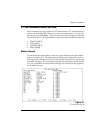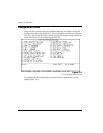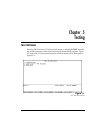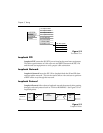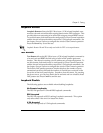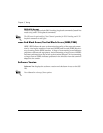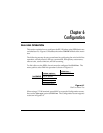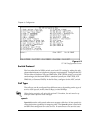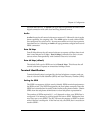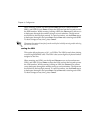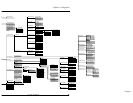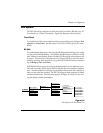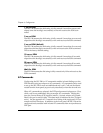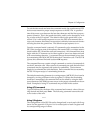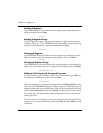
Chapter 6. Configuration
61202.029L2-1 ISU 128 User Manual 25
less than data service. A Speech call type does not guarantee an end-to-end
digital connection with some local and long distance carriers.
Audio
Audio directs the call control software to request a 3.1 kHz audio circuit as the
bearer capability for outgoing calls. The Audio option is used with an ISDN
line configured for voice service. In some areas audio service is less expensive
than data service. Selecting an Audio call type guarantees a digital end-to-end
ISDN connection.
Data 56 kbps
Data 56 kbps directs the call control software to request a 64 kbps data circuit
that is rate-adapted to 56 kbps. Data 56 kbps is intended for use in circum-
stances where interoperability with Switched 56 service is desired.
Data 64 kbps (default)
The default Call type for ISDN service is Data 64 kbps. This directs the call
control software to request an unrestricted 64 kbps circuit.
Terminal Identification
Terminal identification is assigned by the local telephone company and con-
sists of a Service Profile Identifier (SPID) and Local Directory Number (LDN).
Setting the SPID
The SPID is a sequence of digits used to identify ISDN terminal equipment to
the ISDN switch. The SPID is assigned by the local phone company when the
ISDN line is installed and it usually looks similar to the phone number. Obtain
SPIDs from the telephone administrator or local telephone representative.
The number of SPIDs required (0, 1, or 2) depends on how your ISDN line is
configured. For instance, a point-to-point line has no SPID. Multipoint lines
may have one or two SPIDs. The ISU 128 uses the presence of SPID 1 to deter-
mine if the line is multipoint. If the line has only one SPID, then it must be en-
tered in SPID 1.



